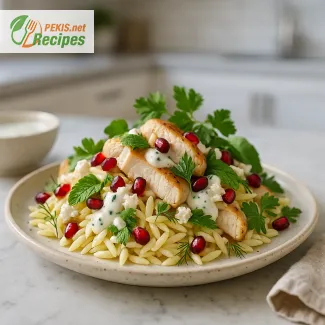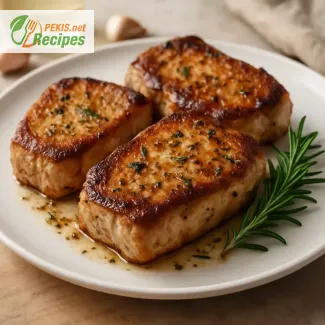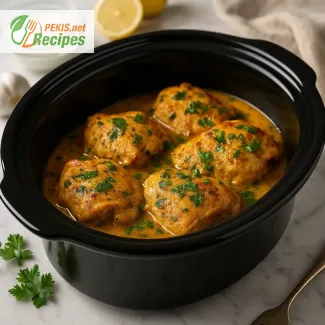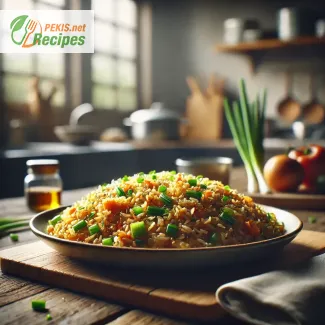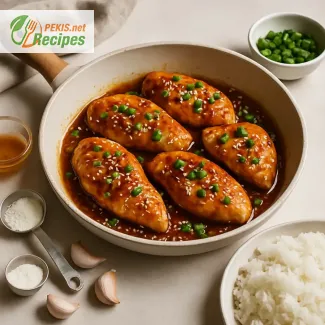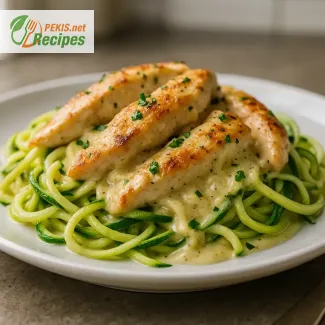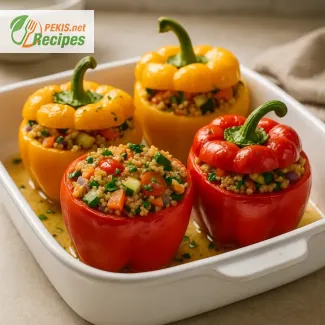
Wholesome Flavor Meets Comfort: A Fresh Take on Stuffed Peppers
A colorful, satisfying twist on a plant-forward classic
When it comes to plant-based comfort food, few dishes strike the perfect balance between hearty and healthy like quinoa stuffed peppers with vegetables. This recipe elevates the traditional stuffed pepper by using protein-rich quinoa, a naturally gluten-free ancient grain, and a vibrant medley of sautéed vegetables. The result is a dish that’s not only visually appealing but also deeply satisfying and nourishing.
Stuffed peppers have long been a staple in many cultures, with variations found in Mediterranean, Middle Eastern, and Latin cuisines. This particular version leans into vegetarian cooking with bold textures, fresh herbs, and the subtle nuttiness of quinoa, offering a modern interpretation that feels both light and filling. Unlike traditional versions loaded with meat and cheese, these quinoa-stuffed bell peppers are ideal for those looking to enjoy plant-forward meals that don’t compromise on taste or comfort.
Why quinoa makes the perfect stuffing base
Quinoa has surged in popularity thanks to its high protein content, mild flavor, and quick cooking time. Unlike rice, which can feel heavy or starchy in certain preparations, quinoa stays light and fluffy even when baked. Its slightly nutty profile complements the sweetness of roasted bell peppers, while its small granules allow it to soak up the savory juices from the vegetable filling.
In this recipe, quinoa serves as more than just a filler. It creates a satisfying grain-vegetable synergy with diced zucchini, tomatoes, carrots, and onions, all sautéed to bring out their natural sweetness. Finished with fresh parsley, garlic, and a drizzle of olive oil, the mixture is layered with flavor in every bite. The end result is a dish that’s rich in texture, taste, and visual appeal—ideal for weeknight dinners, potlucks, or as a make-ahead meal prep option.
The best peppers for stuffing: color and structure matter
While you can use any bell pepper for stuffing, the choice of color makes a difference in both flavor and presentation. Red, yellow, and orange peppers tend to be sweeter and roast beautifully, offering a vibrant contrast to the savory quinoa mixture. Green peppers, while slightly more bitter, hold up exceptionally well during baking and provide a more traditional base.
Look for medium to large peppers with flat bottoms so they stand upright in the baking dish. Consistent size ensures even cooking and a uniform presentation. A small cut at the base (without puncturing through) can help stabilize them if needed. Removing all seeds and membranes helps the interior cook evenly and allows for more space to pack the filling.
Making it your own: customizable ingredients and flavors
One of the biggest advantages of this dish is its versatility. While the recipe calls for a classic mix of Mediterranean vegetables, it can easily adapt to seasonal ingredients or pantry staples. Swap zucchini for mushrooms, add spinach or kale, or fold in some chickpeas for extra protein and texture. The addition of crumbled feta, shredded cheese, or a dash of lemon juice can give it a regional flair.
Spices also allow for endless variety. A pinch of cumin, smoked paprika, or chili flakes can take the flavor profile in a different direction—whether you're aiming for a Middle Eastern twist or a more Latin-inspired version. The quinoa mixture can even be made a day ahead and stored in the fridge, making this recipe a go-to for busy weeknights.
Oven-baked perfection: technique makes the difference
What sets this dish apart is the gentle baking process, which allows the peppers to soften while maintaining their shape. The surface of the filling becomes slightly golden, while the inside stays moist and aromatic. Covering the baking dish initially helps steam the peppers, then uncovering allows for light caramelization in the final minutes.
Using a quality baking dish with a fitted lid—or tenting foil over the top—prevents the filling from drying out. Placing a small amount of broth or water in the base of the pan adds moisture and prevents sticking. For a crisper texture, a few minutes under the broiler at the end will give the tops a nice finish.
Ideal for family meals, entertaining, or meal prep
This recipe’s combination of visual appeal, balanced nutrition, and robust flavor makes it a favorite for a variety of occasions. Serve it alongside a green salad for a light dinner, or pair it with roasted potatoes and a yogurt dressing for a more complete spread. The peppers hold their shape well, making them ideal for meal prep and reheating without loss of texture.
They're also great for entertaining—easy to prepare in advance and reheat just before serving. Their vibrant colors and elegant presentation make them a beautiful addition to any dinner table, whether casual or festive.
A timeless vegetarian staple with a modern twist
In a world of fleeting food trends, quinoa stuffed peppers continue to win hearts thanks to their flavorful versatility, wholesome ingredients, and comforting warmth. By pairing ancient grains with fresh vegetables and simple techniques, this dish offers a dependable, repeatable recipe that’s both modern and timeless.
- Rinse the quinoa under cold water, then cook it in vegetable broth according to package instructions (usually 15 minutes simmering, covered). Set aside to cool slightly.
- While quinoa is cooking, preheat the oven to 190°C (375°F).
- Cut the tops off the bell peppers and remove seeds and membranes. Set aside.
- In a large skillet, heat olive oil over medium heat. Add chopped onion and sauté for 3 minutes until translucent.
- Add garlic, zucchini, carrot, and cherry tomatoes. Cook for about 5–7 minutes, stirring occasionally, until vegetables are tender.
- Stir in the cooked quinoa, parsley, lemon juice, cumin, smoked paprika, salt, and black pepper. Mix well and remove from heat.
- Fill each pepper with the quinoa and vegetable mixture, pressing down gently to pack tightly.
- Place stuffed peppers upright in a baking dish. Add 60 ml (¼ cup) of water to the base of the dish. Cover loosely with foil.
- Bake for 25 minutes covered. Remove foil and bake another 10 minutes uncovered to allow tops to slightly brown.
- Serve warm, garnished with extra parsley or a spoonful of plant-based yogurt if desired.
Creative Variations to Elevate Your Stuffed Pepper Dish
Smart swaps and techniques for a richer flavor and healthier meal
Although quinoa stuffed peppers with vegetables already offer a well-balanced, plant-based meal, there are numerous ways to enhance their flavor, texture, and nutritional value. Whether you're looking to tailor the dish for seasonal ingredients, improve the structure of the filling, or simply add more depth, small adjustments can transform this everyday dinner into a standout favorite.
Flavor enhancers: herbs, spices, and umami elements
To give the dish more complexity, adding fresh herbs like basil, thyme, or cilantro can brighten the filling and enhance the aroma. While parsley provides a clean, herbal note, other herbs introduce more nuanced layers. For instance, roasted garlic instead of raw minced garlic offers a mellow sweetness, while a dash of balsamic vinegar or lemon zest just before serving can heighten freshness and contrast.
For a heartier, more umami-rich filling, consider including mushrooms, especially cremini or portobello, finely chopped and sautéed with onions. They absorb seasoning well and create a satisfying, meaty bite. A small amount of tamari or soy sauce (low-sodium) can boost the savory profile—just be mindful of sodium levels.
Protein upgrades for added satiety
While quinoa is already a complete protein, the dish can be further fortified with additional plant-based protein sources. Lentils (brown or green), when pre-cooked and lightly seasoned, blend well into the mix and give the filling a denser structure. Similarly, chickpeas (either mashed or whole) add earthiness and body.
For those who tolerate dairy, a modest sprinkle of feta cheese or goat cheese inside the peppers before baking introduces creaminess and a tangy note. Vegans can mimic this effect using crumbled tofu marinated in lemon juice and nutritional yeast, or a dollop of plant-based yogurt or cashew cream after baking.
Healthier cooking fats and roasting options
Instead of cooking the vegetables in large amounts of oil, try dry sautéing or using a non-stick skillet with just a teaspoon of olive oil. Another excellent trick is roasting the diced vegetables in the oven before mixing them with quinoa. This caramelizes their natural sugars and adds a richer, smoky flavor to the dish.
For an even more nutrient-dense base, consider replacing half the quinoa with millet, buckwheat, or farro (if gluten is not a concern). These grains offer varying textures and unique mineral profiles.
Choosing the right bell peppers
Not all peppers roast equally. Red and yellow bell peppers are typically sweeter and develop a richer flavor when roasted. If you'd like a slightly firmer bite and less sweetness, green peppers are a good alternative. Try to choose peppers that are uniform in size to ensure even cooking.
Before filling them, you can pre-roast the peppers for 10 minutes in the oven. This softens them slightly and shortens overall cooking time, which can help retain the integrity of the filling and prevent it from drying out.
The importance of seasoning and moisture control
Stuffed peppers can fall flat if under-seasoned. Since quinoa absorbs a lot of liquid and flavor, it’s important to season each layer of the dish: the cooking broth, the sautéed vegetables, and the final mixture. Consider using vegetable stock instead of water when cooking quinoa to infuse more depth.
Another common mistake is over-packing the peppers. While it’s tempting to press the filling in tightly, doing so can make it dense and heavy. Instead, lightly spoon in the mixture, leaving some air so the filling remains fluffy. If you're worried about the dish drying out in the oven, placing a small amount of broth or water in the bottom of the baking dish and covering it with foil for the first half of baking will keep everything moist.
Making it kid-friendly or spice-forward
For families with children or picky eaters, consider blending some of the vegetables more finely or including sweet corn and peas to add color and natural sweetness. You can also top each pepper with a small amount of shredded cheese toward the end of baking to appeal to younger palates.
For those who enjoy heat, mix in some finely chopped chili, a pinch of cayenne pepper, or even harissa paste for North African-inspired warmth. Just be sure to balance the spiciness with acid (like lemon or vinegar) to avoid overpowering the dish.
From side to centerpiece: how to serve creatively
Although this dish stands alone as a full meal, you can serve it in various ways to elevate presentation. For instance, plate it on a bed of sautéed greens, like spinach or chard, or alongside a cold yogurt-cucumber sauce for contrast. For gatherings, serve the peppers sliced in half, lengthwise, like boats, and arrange them on a platter for easy sharing.
Reheating leftovers? Cover the peppers with foil and reheat in the oven to preserve moisture. Avoid microwaving uncovered, as this can cause the quinoa to become rubbery or dry.
A homemade version that’s better than store-bought
Preparing this dish from scratch ensures fresh, high-quality ingredients, lower sodium, and no preservatives—elements that are often compromised in ready-made versions. You also control the spice level, texture, and fat content, making the homemade option not just healthier, but more flavorful and tailored to your preferences.
In addition, making it at home allows you to experiment with global flavors: try cumin and coriander for a Moroccan twist, turmeric and mustard seeds for an Indian profile, or basil and sun-dried tomatoes for a Mediterranean variation. Each spice combination creates a different interpretation of this versatile vegetarian classic.
Allergens present in the recipe:
- None of the main allergens (e.g., nuts, dairy, soy, gluten) are present.
Gluten-free: Yes
Tip for allergens: If using store-bought broth, check the label to confirm it's gluten-free and allergen-free. Always ensure spices and condiments do not contain hidden gluten or allergens.
Vitamins and minerals per serving (approximate):
- Vitamin A: 880 µg – Supports vision, immune function, and cell growth.
- Vitamin C: 130 mg – Enhances immune defense, aids in collagen synthesis, and improves iron absorption.
- Vitamin K: 40 µg – Important for blood clotting and bone metabolism.
- Folate (B9): 110 µg – Essential for red blood cell formation and cell division.
- Potassium: 620 mg – Helps maintain fluid balance and supports nerve signals.
- Iron: 3.2 mg – Aids oxygen transport and energy production.
- Magnesium: 90 mg – Supports muscle function and energy metabolism.
Antioxidants per serving (approximate):
- Lycopene: 4.5 mg – Found in red peppers and tomatoes; helps protect cells from oxidative damage.
- Beta-carotene: 3.1 mg – Converts to Vitamin A and supports skin and eye health.
- Quercetin: 25 mg – Anti-inflammatory and immune-boosting flavonoid found in onions and parsley.
- Vitamin E: 2.2 mg – Protects cells from free radical damage and supports immune function.
